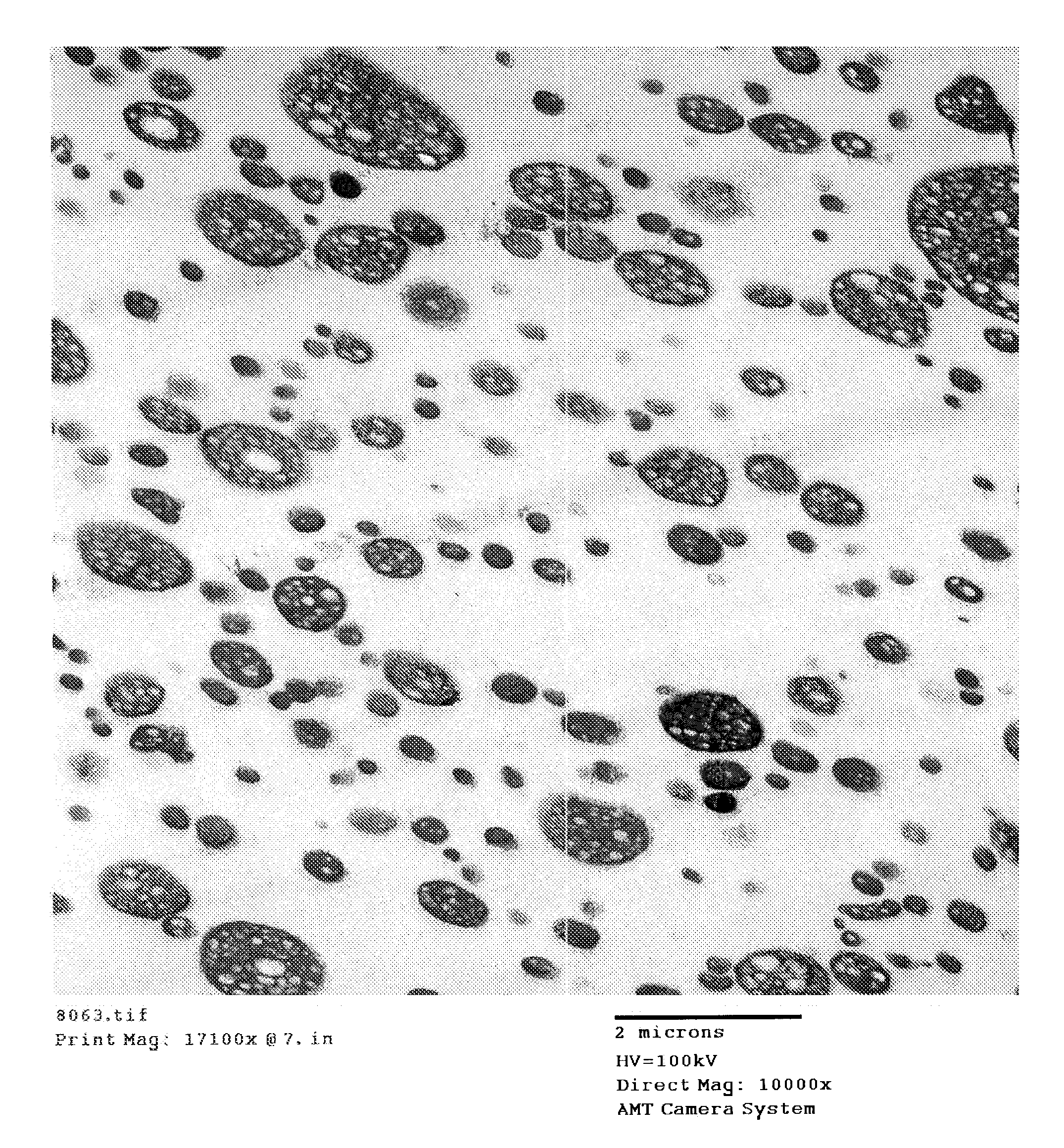Methacrylic resin composition, resin modifier, and molded article
a technology of methacrylic resin and composition, applied in the field of methacrylic resin composition, can solve the problems of limiting the application of methacrylic resin to a wider range, not sufficiently improving the low impact resistance of methacrylic resin, etc., to achieve excellent molding processability, maintain impact resistance, and improve the effect of impact resistan
- Summary
- Abstract
- Description
- Claims
- Application Information
AI Technical Summary
Benefits of technology
Problems solved by technology
Method used
Image
Examples
example 1
Production of Resin Modifier Comprising Star Block Copolymer (B-1)
[0111](1) Into a 1.5-liter autoclave container equipped with a stirrer, 694 ml of toluene and 0.018 ml of 1,2-dimethoxyethane were fed, and nitrogen purge was performed for 20 minutes. And, 2.77 ml of a cyclohexane solution of sec-butyllithium at a concentration of 1.3 mol / l was added thereto, and then 128 ml of 1,3-butadiene was added. The mixture was reacted at 30° C. for 1.5 hours to obtain a reaction mixture containing 1,3-butadiene polymer. A part of the obtained reaction mixture was sampled and analyzed. As a result, the 1,3-butadiene polymer in the reaction mixture had a number average molecular weight (Mn) of 36,000, a molecular weight distribution (Mw / Mn) of 1.06, and a side chain vinyl bond content of 49 mol %. The 1,3-butadiene polymer (polymer block (b)) had a glass transition temperature of −60° C.
(2) The reaction mixture obtained in the above step (1) was cooled to −30° C. Then, 60 ml of a toluene soluti...
example 2
Production of Resin Modifier Comprising Star Block Copolymer (B-2)
[0112]A star block copolymer (B-2) was obtained in the same manner as in EXAMPLE 1 except that 1,2-dimethoxyethane was not added, that the amount of 1,3-butadiene was changed to 112 ml, and that the amount of n-butyl acrylate was changed to 144 ml. The obtained star block copolymer (B-2) comprised 35% by mass of a 1,3-butadiene unit and 65% by mass of an n-butyl acrylate unit. The polymer block (b) composed of 1,3-butadiene had a vinyl bond content of 10 mol % and a glass transition temperature of −95° C. The polymer block (a) composed of n-butyl acrylate had a glass transition temperature of −49° C. The butadiene-n-butyl acrylate diblock copolymer (arm polymer block) had a number average molecular weight of 66,000 and a ratio of weight average molecular weight to number average molecular weight (Mw / Mn) of 1.05. Moreover, the star block copolymer had a number average molecular weight (Mn) of 374,000 (the number of arm...
example 3
Production of Resin Modifier Comprising Star Block Copolymer (B-3)
[0113]A star block copolymer (B-3) was obtained in the same manner as in EXAMPLE 2 except that the amount of 1,3-butadiene was changed to 144 ml, and that the amount of n-butyl acrylate was changed to 122 ml. The obtained star block copolymer (B-3) comprised 45% by mass of a 1,3-butadiene unit and 55% by mass of an n-butyl acrylate unit. The polymer block (b) composed of 1,3-butadiene had a vinyl bond content of 10 mol % and a glass transition temperature of −95° C. The polymer block (a) composed of n-butyl acrylate had a glass transition temperature of −49° C. The butadiene-n-butyl acrylate diblock copolymer (arm polymer block) had a number average molecular weight of 60,000 and a ratio of weight average molecular weight to number average molecular weight (Mw / Mn) of 1.04. Moreover, the star block copolymer had a number average molecular weight (Mn) of 411,000 (the number of arms=6.85), and Mw / Mn of 1.18. The content ...
PUM
| Property | Measurement | Unit |
|---|---|---|
| glass transition temperature | aaaaa | aaaaa |
| refractive index | aaaaa | aaaaa |
| glass transition temperature | aaaaa | aaaaa |
Abstract
Description
Claims
Application Information
 Login to View More
Login to View More - R&D
- Intellectual Property
- Life Sciences
- Materials
- Tech Scout
- Unparalleled Data Quality
- Higher Quality Content
- 60% Fewer Hallucinations
Browse by: Latest US Patents, China's latest patents, Technical Efficacy Thesaurus, Application Domain, Technology Topic, Popular Technical Reports.
© 2025 PatSnap. All rights reserved.Legal|Privacy policy|Modern Slavery Act Transparency Statement|Sitemap|About US| Contact US: help@patsnap.com

